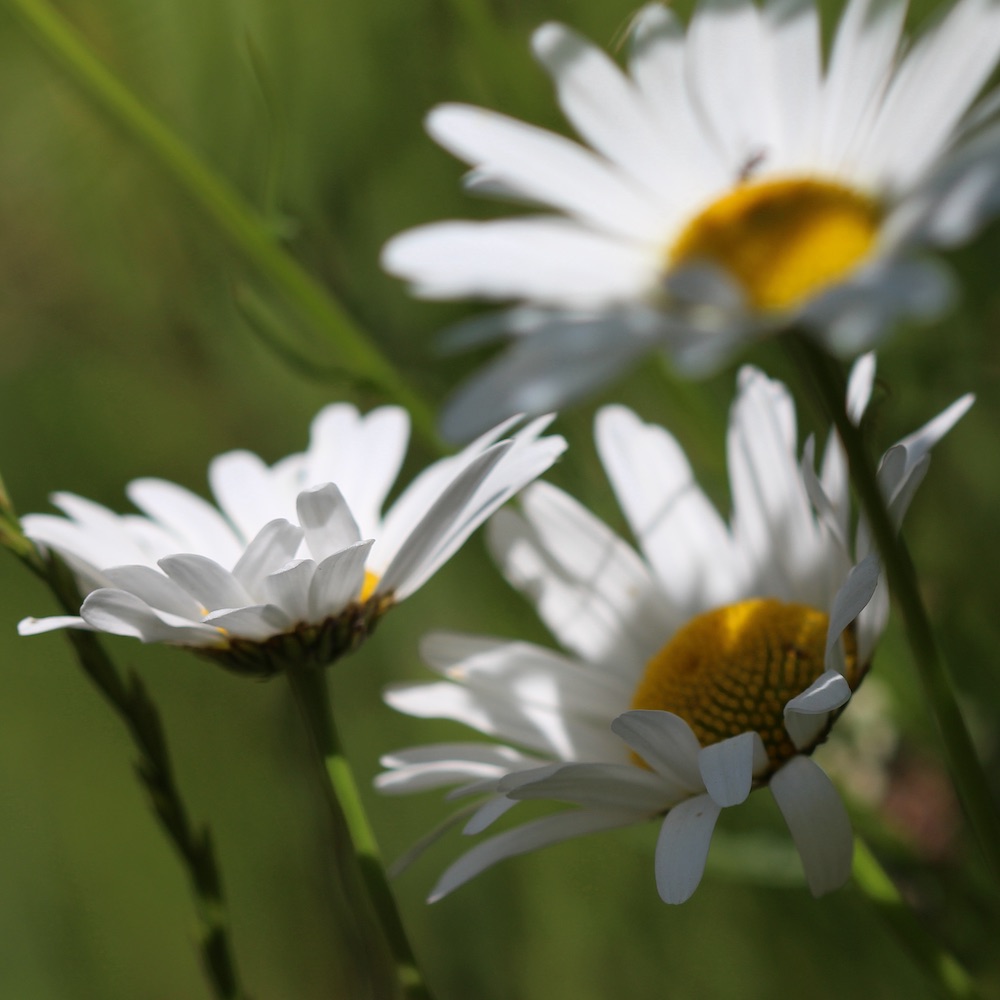
Hedges and verges are full of Oxeye Daisies glowing white and bright throughout the summer.
Photo: Amanda Scott
Scientific name: Leucanthemum vulgare (previously Chrysanthemum leucanthemum)
Other common names: Moon Daisy, Horse Daisy, Dog Daisy, Moonpenny
What to look for:
- Family: Asteraceae (Daisy family)
- Flowers: Like a large daisy, with yellow centre (disc florets) and white ‘petals’ (ray florets)
- Leaves and stem: The usually unbranched stem is slightly hairy with clasping toothed leaves arranged alternately. There is a basal rosette of long, stalked and toothed leaves. Bracts are overlapping, with a purple edge.
- Height: Up to 70 cm
- Where: Common, in grasslands, meadows and verges: prefers fertile soils. Native to Europe and temperate Asia.
- When: Flowers from May through to September.
- Habit: Upright.
The white and yellow brilliance of Oxeye Daisy flowers shines in many hedgerows and meadows and along coastal grasslands throughout the summer. On the cliff tops of The Lizard you might spot plants growing to only an inch or two high, an adaptation to coping with the fierce winds of this habitat, but further inland it can reach heights of up to two or three feet.
The Oxeye Daisy is an arch-coloniser and so, while it is no longer found in much of our agricultural grassland, a victim of modern farming methods, it has made a vigorous comeback in set-aside farmland, hedges and verges.

Did you know…?
…Unlike its smaller cousin the Common Daisy (Bellis perennis), the flowheads of the Oxeye Daisy do not close up as dusk falls, and this has earned it its alternative common names of Moonpenny or Moon Daisy.
…The Daisy family (Asteraceae) is one of the most advanced of the flowering plants, from an evolutionary perspective. Each ‘flower’ of a plant in Asteraceae is in fact made up of many small flowers – or inflorescences – which are of two types: either tube-like and clustered in a central disc (the disc florets), or having the superficial appearance of petals round this disc (the ray florets). See the photograph (to the left) of the yellow disc to see how it is composed of many small flowers.
More information and references:
Mabey, R., 1997. Flora Britannica. Chatto & Windus, London.
Rose, F. and O’Reilly, C., 2006. The Wild Flower Key, 2nd edition. Frederick Warne, London.
Stace, C., 2010. New Flora of the British Isles, 3rd edition. Cambridge University Press, Cambridge.
Published: June 2015
Author: Amanda Scott
Photos: Amanda Scott

